What are structural pellets?
The term “pellets” covers compressed pellets made of stalk crops such as straw, hay or alfalfa. The “structural pellets” produced with the KRONE Premos pellet mill represent a special form. The special feature of these compressed pellets is that they are produced from uncrushed crops and are very coarse with a diameter of 16 mm. Due to their high structural content, the structural pellets are extremely absorbent and at the same time low in dust. As temperatures of up to 90 °C are generated during pelletising under high pressure, these pellets are also virtually germ-free. Due to these positive properties, the structural pellets can be used excellently not only as litter material and feed in animal husbandry, but also for generating energy as a biogas substrate or as a heating material.
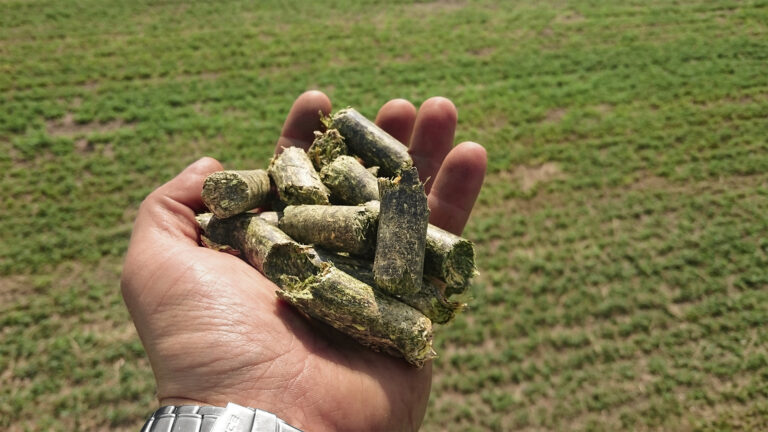
How do structural pellets work?
What can structural pellets be used for?
Litter
The largest proportion of structural pellets is used as litter material in animal husbandry. Compared to conventional industrial pellets (diameter of 6 to 8 mm), the 16 mm thick structural pellets have a much coarser structure. The large relative surface area results in high absorbency so that 1 kg of structural pellets can bind up to 4 l of water. In this way, these pellets are able to optimally bind the moisture from animal excrement in the form of faeces and urine from the stable/shed floor. The structural pellets also absorb odours and ammonia from the stable/shed air and therefore improve the stable/shed climate.
The coarse structure of the pellets ensures that the material distributed as litter on the stable/shed floor increasingly dissolves as moisture is absorbed and covers the floor with a non-slip, but still quite soft mat. Compared to straw chaff, this requires a significantly smaller quantity of pellets. Not only the need for litter material is considerably reduced, but also the amount of manure and the time required for mucking out the stable/shed. The structural pellets are also easy to handle, as they can be scattered by hand from a bucket with little effort. Due to the high bulk density of 600 to 700 kg/m3, only little storage space is required which is advantageous especially when there is often a lack of space anyway.
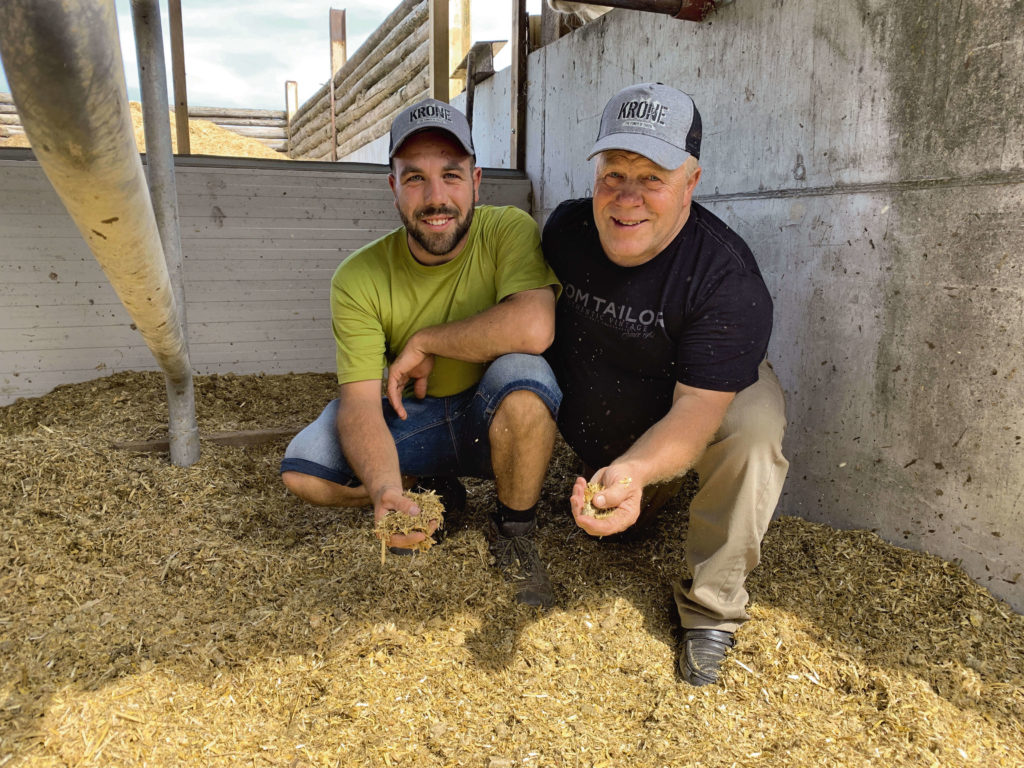
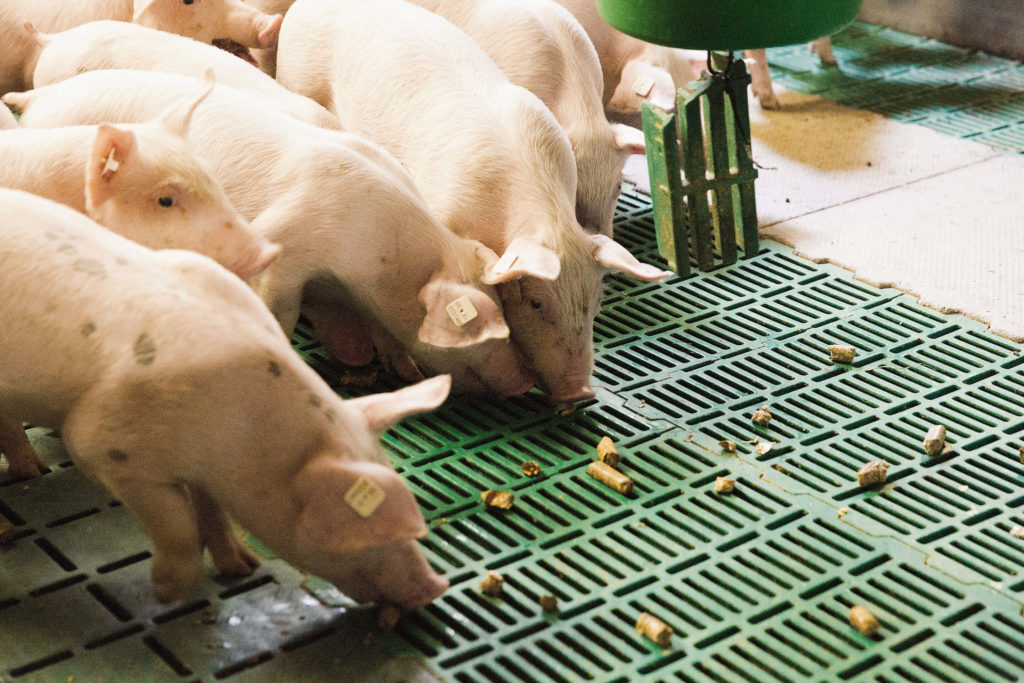
Manipulable material
Increasingly, structural pellets are also being used as manipulable material in pig and poultry farming.
According to §26 of the Tierschutz-Nutztierhaltungs-Verordnung (German Ordinance on Animal Welfare and Farm Animal Husbandry), all pigs must have been offered organic and high-fibre manipulable material since 1.8.2021. This must be “movable, investigable, modifiable and serve exploratory behaviour”. Structural pellets fulfil these requirements completely, as they promote the natural exploratory behaviour and therefore also the well-being of the animals thanks to the special structure of the pellets. Last but not least, rooting and nibbling on the pellets significantly reduces the risk of tail biting of non-docked pigs.
The use of structural pellets as a manipulable material has also proven successful with poultry farmers. Chickens in particular spend most of the day exploring their environment with their beaks. They peck and scratch at the pellet-covered ground in search of food, exercising their natural exploratory and foraging behaviour. In this way, behavioural disorders, such as feather pecking, which may cause agonising injuries and even death in laying hens and turkeys, can be avoided.
Forage
Structural pellets make excellent roughage which is an absolute “must” for farms participating in the Initiative Tierwohl (ITW) (Animal Welfare Initiative). With a crude fibre content of 45 to 55 % in the dry matter, the structural pellets meet the ITW requirements so that they can be given as an additive separately to the feed and, if required, additionally to other manipulable material. This not only benefits the welfare of the animals, but also pays off for the farmer through higher remuneration for the meat produced in this way.
Thanks to their high swelling capacity, the feeding of structural pellets to lactating sows ensures that their digestive system can be gradually expanded and more forage can therefore be absorbed. In addition, the pellets promote calmness in the animals due to the earlier onset of a feeling of satiety and therefore ensure less stress. Scientists have found that the fibre contained in the pellets also promotes the intestinal health of the pigs and strengthens their immune system. As a result of the heat treatment during their production, the structural pellets are almost germ-free. Among other things, this ensures mycotoxin-free forage which is extremely important for use in poultry farming, especially because of the high hygiene requirements.
In addition to hay pellets, the protein-rich alfalfa pellets in particular are an ideal supplement as roughage for ruminants such as cattle, horses, sheep and goats. Thanks to their richness in essential amino acids, vitamins and minerals, these structurally rich pellets prevent, among other things, claw problems, abomasal displacement or acetonemia and promote the fertility of the animals.
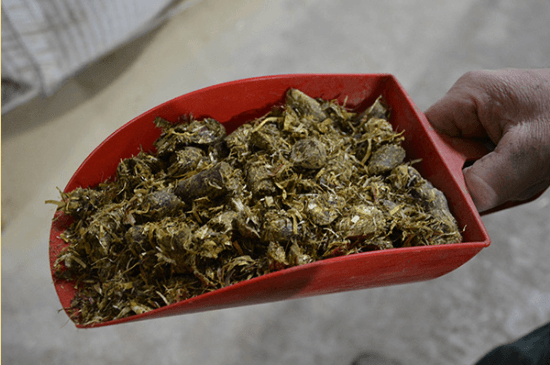
What are the advantages of structural pellets?
Cattle
- Litter for different types of sheds
- Firm mat in the shed
- Low straw requirement
- Less manure production
- Easy handling
- Low storage space requirement
- High moisture retention
- Cleanliness improves udder hygiene
- Protein and mineral-rich alfalfa pellets beneficial for ruminant health and fertility
Poultry
- Absorbent litter Better foot health and clean eggs
- Optimum shed climate due to binding of ammonia
- Easy handling
- Low straw requirement and manure production
- Almost germ-free manipulable material
- Better animal health by avoiding feather pecking
Pigs
- Litter for different types of sheds
- Low straw requirement
- Less manure production
- Low storage space requirement
- Optimum binding of moisture and ammonia
- Ideal as a manipulable material for animal welfare
- Reduced tail biting
- Beneficial as roughage for intestinal health and the immune system
"The use of structural pellets made of straw is absolutely convincing from the point of view of animal welfare, to which we attach great importance. But there are also enormous advantages for our company in terms of labour economics."
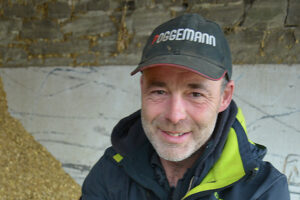
"Especially by dealing with the straw pellets we can significantly reduce tail biting and losses caused by it. This is very important for us, as we now raise our pigs with long tails."

"As the chickens can peck at the pellets all the time, feather pecking problems are also a thing of the past. In this respect, the structural pellets are a positive addition to the pecking stones placed in the shed."
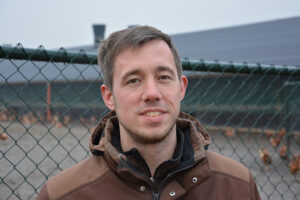
"The use of structural pellets made of straw is absolutely convincing from the point of view of animal welfare, to which we attach great importance. But there are also enormous advantages for our company in terms of labour economics."

"Especially by dealing with the straw pellets we can significantly reduce tail biting and losses caused by it. This is very important for us, as we now raise our pigs with long tails."

"As the chickens can peck at the pellets all the time, feather pecking problems are also a thing of the past. In this respect, the structural pellets are a positive addition to the pecking stones placed in the shed."

Horse husbandry
Very sensitive and eager to run – this is an apt description of a horse. On the one hand, quadrapeds react very sensitively to dusty air in the stable. On the other hand, due to their strong urge to move, they need a surface which is as non-slip as possible. By using structural pellets as bedding, you ensure a secure footing for your horses and improved stable hygiene.
Advantages
- Non-slip and safe floor covering
- Dry and hoof-friendly surface
- Low straw requirement
- Less manure production
- Low storage space requirement
- Easy handling
- Optimum shed climate due to binding of ammonia
- Fewer respiratory diseases due to low dust
"Compared to before, we now need significantly less litter material and the effort of mucking out the stable has also been reduced considerably."
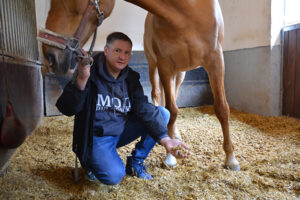
"Compared to before, we now need significantly less litter material and the effort of mucking out the stable has also been reduced considerably."
